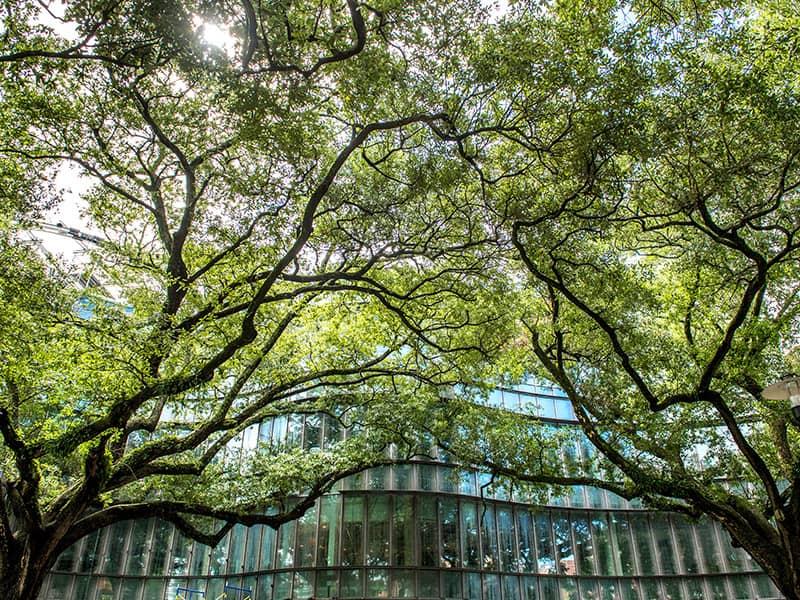Tulane recognized as ‘Tree Campus’ by Arbor Day Foundation
For the twelfth year in a row, the Arbor Day Foundation has singled out Tulane’s commitment to maintaining its extensive canopy of majestic oaks and other trees by naming it an official Tree Campus USA among higher education institutions. The organization, which has planted more than 350 million trees across the globe, inspires people to plant, nurture and celebrate trees to promote a greener and healthier future for the earth.
Tulane’s historic oaks and expansive greenery are an essential part of the uptown campus, which has more than 400 trees throughout. Live oaks, crape myrtles and bald cypress trees are a few of the species that have been a part of the university since Tulane’s uptown campus was founded in 1884. All are regularly monitored, surveyed and cared for by several partners within the Tulane community including the University Planning Office, Capital Projects and Facilities Services.
“I just can't imagine the campus without these 100-year-old live oak trees and some of them are most likely older than that,” said Bill Mizell, landscape architect at Tulane University. “I think that's one of the first things that people notice when they come to campus so it’s an honor to be recognized by the Arbor Foundation for the work that we’ve done to make sure that the trees on our campus are properly cared for and thriving.”
To be named a Tree Campus Higher Education Institution, Tulane must meet five core standards annually, including the establishment of a tree advisory committee, evidence of a campus tree care plan, dedicated annual expenditures for its campus tree program, an Arbor Day observance, and the sponsorship of student service-learning projects.
“Respecting the trees and keeping them alive and healthy is one of our top priorities,” said Amber Beezley, director of feasibility, planning and programming at Tulane. “We have many historic trees that have been here since the beginning of the campus, so we do our best to maintain them and our campus canopy for both shade and for sustainability of groundwater absorption. Partnering with the Center for Public Service to do service projects has provided educational opportunities for our students because they’re learning more about the environment and about how planting and maintaining trees help to sustain our campus and our city.”
The Newcomb Oaks lining the Newcomb Quad were planted from acorns taken from the original Newcomb campus more than 100 years ago. The metasequoia tree in front of the School of Architecture can be traced back to seeds collected in China. That legacy is something that Tulane is still honoring today through initiatives and partnerships with organizations like the Arbor Day Foundation.
“When the business school was renovated, it was all about maintaining those live oaks down McAllister Place,” Beezley said. “We developed a tree policy many years ago that protects our trees on campus from contractors when we're doing large projects. We have so many trees that we're running out of space to plant based on the underground infrastructure but typically each project either replaces trees or adds more trees with the campus landscape architect.”

